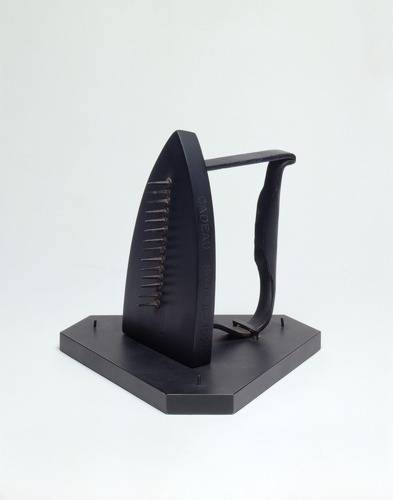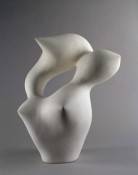Paris’ Centre Pompidou Unveils Surrealism and the Object

Second part of Surrealism starts in 1947. At that time its members are getting more and more involved in politics. Some of them, the most active ones, enrolled themselves in the communist party. Communist ideology, which involved the rejection of market fetishization of the artwork, and the suspicion of an “artistic genius” that endorsed the social division of labor, characterized the iconoclasm that surrealism had inherited from Dada of “revolutionary significance “. The object, which would crystallize the ideas of surrealism activist, had established itself as the answer to this new philosophical and political context. If they can remind us the ready-made in the way that they “recycle” everyday objects, the first Surrealist objects also carry the collage, the game of exquisite corpse practiced by the Surrealists in 1925.
“The Surrealist Exhibition of Objects”, presented at the Ratton Gallery in May 1936, is dedicated to the essence of surrealism that demonstrates its ability to transfigure, transmute objects and, through them, the reality itself. Far from any knowledge of any “artistic genius” is the power of appointment surreal that is the subject of the exhibition. Surrealism is a literary, cultural and artistic movement of the first half of the twentieth century, including the whole process of creation and expression using all psychic forces (automatism, dreams, unconscious) released from the control of reason and fight against the values received. Two men named the movement: the poet Arthur Rimbaud (1854-1891) wanted to be a visionary, and putting himself into a state of perceiving the hidden side of things, another reality. It is continuing attempts to Rimbaud that poet Guillaume Apollinaire (1880-1918) went in search of the mysterious and invisible reality.By automatic writing, the surrealists wanted to give a voice to the deepest desires, repressed by society. The surrealist object obtained initially puzzling effect of the mind. Demystifying the artwork and the project of the registration of surrealism in the real world, also expressed themselves by a real conquest of space, and by staging surrealist art exhibitions that announce the idea of “Installation”.
Around a hundred sculptures and forty photographs, this exhibition will follow the history of the surrealist movement since its foundation in 1920, its recognition in New York during the Second World War, through international success in the 1930s, through a unique prism of one relative to the object.















